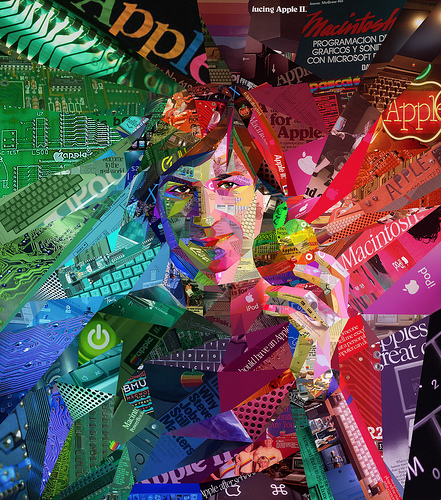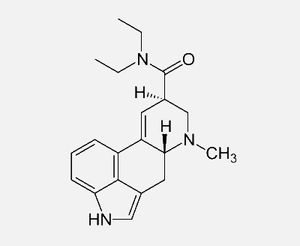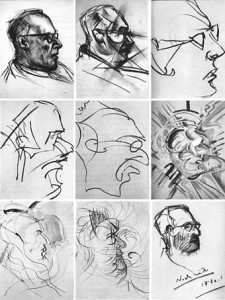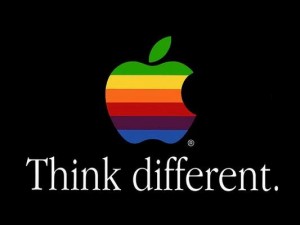LSD and Creativity
In 2007, Albert Hofmann, the creator of lysergic acid diethylamide (LSD), wrote a letter to Steve Jobs on behalf of his friend Rick Doblin, who was the founder of the nonprofit organization Multidisciplinary Association for Psychedelic Studies (MAPS). Hofmann was with hopes, at the age of 101, that Jobs might want to make a donation to support Swiss psychiatrist Dr. Peter Gasser’s proposed study of LSD-assisted psychotherapy. The main mission of MAPS is to develop psychedelics and marijuana into prescription drugs that could be made available to treat people with post-traumatic stress disorder (PTSD), pain, drug dependence, anxiety, and depression. Hofmann, a large supporter of the organization, pushed the idea that his creation has helped others and could provide crucial benefits in future health treatments and so asked Jobs for “help in the transformation of [his] problem child into a wonder child.” Many others who have had the opportunity to experiment with this psychedelic drug brought on an entirely different perspective of what LSD provides: an awakening of the Self and for many innovative thinkers an eye-opening journey in expanding their creativity.

An artistic portrait of a young Steve Jobs (source unknown). Could LSD have played a role in the creation of Apple computers?
In an interview with Jobs for John Markoff’s book, “What the Dormouse Said: How the Sixties Counterculture Shaped the Personal Computer Industry”, Jobs called his LSD experiences as “one of the two or three most important things I have done in my life.” As a dropout from Reed College in Portland, Jobs did in fact pursue a counterculture lifestyle experimenting with drugs before and after co-founding Apple. Jobs who recently passed away early October will always be remembered as someone who changed the high-tech world and someone to have always “maintained close emotional ties to the era in which he grew up”, which were the late 60’s-early 70’s. Could LSD have played a role in the creative thought that lead to the creation of Apple computers? Does the use of LSD even make one more creative?

As I have learned from my Drugs and Behavior course, LSD has been noted to cause hallucinations, synesthesia, altered temporal perception and certain side-effects that include paranoid psychoses, depression, “flashbacks”, or intoxication-induced anxiety (otherwise known as a “bad-trip”). The action of LSD is on the 5-HT-2A receptor where it works as a partial agonist just like many other hallucinogens. It is also extremely potent requiring as little as 20 micrograms to elicit an effect. LSD is ingested orally, typically as a liquid drop, on absorbant blotter paper or a sugar cube, and the effects generally are normally reported beginning around 30 minutes later. Tolerance has been found to be profound and there have been no reported cases of LSD negatively affecting the brain after use.

Through the course of an LSD experiment, an artist compiled nine drawings.
In previous studies, LSD has been administered to subjects, particularly artists who were told to create a piece of artwork during the course of the experiment. Their artworks were then compared before, during, and after the intake of a tablet. Many studies have used similar methods. One art historian has observed these acid-influenced pieces to be “more abstract, symbolic, brighter, more emotional and aesthetically adventuresome, and non-representational, and they tended to use all available space on the canvas.” Markoff describes in his book that people in the 1960’s “tried LSD neither for kicks nor therapy, but to gain glimpses of new and rich worlds of consciousness.” Perhaps it was these “new and rich worlds” which later inspired many of today’s massive success stories like Steve Jobs. LSD also seemed to be an inspirational favorite of Chemists: Sir Francis Crick claimed in an interviewer that he first imagined the structure of DNA under the influence of LSD, and Kary Mullis believed LSD helped him to develop the polymerase chain reaction, which later won him the 1993 Nobel Prize in Chemistry.
Steve Jobs recently passed away, but left behind a legacy.

Think
Did Dropping Acid Make Steve Jobs More Creative? – Slate.com
Nine Drawings – Cowboy Books
“What the Dormouse Said: How the Sixties Counterculture Shaped the Personal Computer Industry” By: John Markoff
Dr. LSD to Steve Jobs: How was your trip? – CNN Money
Read the Never-Before-Published Letter From LSD-Inventor Albert Hofmann to Apple CEO Steve Jobs – Huffington Post
The Pharmacology of Lysergic Acid Diethylamide: A Review – MAPS.org
February 18, 2012
[…] LSD and Creativity […]